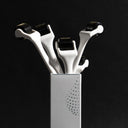Hair loss is a natural process that affects many individuals throughout their lives, but the severity and pattern of hair loss can vary greatly depending on age and other factors. While some individuals may experience gradual thinning, others may face more significant and rapid hair loss at certain stages of life. Understanding when hair loss tends to be at its worst can help individuals take proactive measures to manage and potentially prevent excessive shedding.
What Age is Hair Loss the Worst?
While hair loss can occur at any age, studies suggest that the incidence and severity of hair loss tend to peak during specific age ranges.
- For men, hair loss often becomes more noticeable and progresses rapidly between the ages of 30 and 50, with the onset of male pattern baldness (androgenetic alopecia).
- For women, significant hair thinning and shedding may occur during the late 40s and 50s, often coinciding with the menopausal transition and hormonal fluctuations.
- In both men and women, hair loss can also become more prominent in the later years of life, typically after the age of 70, due to various age-related factors.
The Impact of Hormonal Changes
Hormonal fluctuations play a significant role in the severity of hair loss experienced at different ages. Here's how hormones can influence hair loss patterns:
- Male Pattern Baldness: In men, the onset and progression of male pattern baldness (androgenetic alopecia) is largely driven by the effects of the male hormone dihydrotestosterone (DHT) on hair follicles. This process often accelerates during the 30s and 40s, leading to more noticeable hair thinning and receding hairlines.
- Female Pattern Hair Loss: For women, significant hair thinning and shedding can occur during the menopausal transition, typically between the ages of 45 and 55. This is due to the fluctuating levels of estrogen and other hormones, which can impact the hair growth cycle and lead to increased hair shedding.
Other Contributing Factors
While hormonal changes are a major driver of age-related hair loss, other factors can also contribute to the severity of hair loss at different stages of life, including:
- Genetics: Individuals with a strong genetic predisposition to hair loss may experience more severe and rapid hair thinning or balding at an earlier age.
- Stress: Significant stress, whether physical or emotional, can trigger excessive hair shedding (telogen effluvium) at any age, but it may be more noticeable during periods of major life transitions or events.
- Medical Conditions: Certain medical conditions, such as thyroid disorders, autoimmune diseases, or nutritional deficiencies, can contribute to hair loss and may become more prevalent with age.
- Medications: Some medications used to treat various conditions, including cancer, arthritis, and depression, can cause temporary or permanent hair loss as a side effect, which may become more pronounced with age.
As your leading source for hair health information over the past 4 years, we never compromise on accuracy. When it comes to your health, you deserve information you can truly rely on - and earning your trust is our top priority.
Here's how Scandinavian Biolabs ensures every piece of content meets the highest standards of accuracy and integrity:
- Credentialed Experts: Our reviewers are actively practicing doctors and medical researchers
- Stringent Reviews: Content undergoes rigorous editing by subject specialists and review by a practicing doctor.
- Evidence-Based: We rely on well-established research from trusted scientific sources like peer-reviewed journals and health authorities.
- Full Transparency: Our editorial standards, writer credentials, reviewer credentials, correction process, and funding are all publicly documented.
- Independent Voice: While we do promote products, we operate in a vacuum to business operations. Our main goal is just an unwavering commitment to providing medically-sound guidance.
You can count on Scandinavian Biolabs to consistently deliver the trustworthy health information you deserve. Read our Editorial Standards.
Managing Hair Loss at Different Ages
While hair loss is often a natural part of the aging process, there are strategies and treatments available to manage and potentially slow down excessive shedding at different stages of life:
- Early Intervention: For individuals experiencing early signs of hair loss, seeking prompt medical advice and exploring treatment options like minoxidil, finasteride (for men), or low-level light therapy can help slow down the progression and potentially promote regrowth.
- Hormonal Therapy: During periods of hormonal fluctuations, such as menopause, hormone replacement therapy or other hormonal treatments may help stabilize hormone levels and reduce hair shedding.
- Lifestyle Changes: Adopting a healthy lifestyle, including a balanced diet, regular exercise, stress management techniques, and gentle hair care practices, can support overall hair health and potentially mitigate excessive shedding.
- Hair Restoration Procedures: For individuals experiencing significant hair loss or balding, hair transplantation or other surgical hair restoration procedures may be an option, depending on individual circumstances and preferences.
It's important to remember that hair loss is a natural and common experience, and seeking professional advice from a dermatologist or trichologist can help identify the underlying causes and develop an effective treatment plan tailored to your specific age and needs.
Stop Hair Loss and Regain Confidence
Are you one of the millions experiencing hair thinning? You're not alone. Hair loss is a common concern, but it can significantly impact your confidence.
Bio-Pilixin Serum is a clinically tested and drug-free approach to combat thinning hair. Our unique formula, with plant growth factors derived from stem cell technology, nourishes hair follicles and promotes new hair growth.
See results in as little as 45 days and experience the benefits of Bio-Pilixin Serum:
- Reduce hair thinning and encourage new hair growth
- Improve scalp health and blood flow to the hair follicles
- Feel more confident with thicker, fuller hair
Don't wait any longer. Take control of your hair loss journey and regain your confidence with Bio-Pilixin Serum.
Read more:






